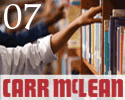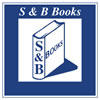The Eagles Book Club
Yannick Tuarze
Yannick Tuarze is a Teacher Librarian at Sir James Dunn Collegiate & Vocational School in Sault Ste. Marie, Ontario
Email: yannick1@hotmail.com
Yannick Tuarze est professeur bibliothécaire à l'école Sir James Dunn Collegiate & Vocational School à Sault Ste. Marie en Ontario
Courriel: yannick1@hotmail.com
Issue Contents | Table des Matières
______________________________________________________
The Ministry of Education in Ontario has been strongly encouraging literacy education in schools for a number of years. As a teacher-librarian, I thought I could implement a reading program in my school by starting a Book Club.
Every second Thursday, the Sir James Dunn Book Club students meet during lunch period in the School Library Information Centre. They come in chatting and full of energy with a book in their hands. I welcome them with a few treats on the table. Sir James Dunn High School is situated in Sault Ste. Marie, Ontario. The student body comes from various backgrounds but the school has a healthy environment for learning.
Doing some research on Book Clubs, I found that there were not too many in high schools but they were quite popular in Public Libraries. The next step was to contact the local public library and ask a few questions. They did gave me a few ideas to start up my Book Club, but the key planning concepts came after reading “Adventures with a High School Book Club,” by Beverly McKee (Library Media Connection, 2005). After reading the article, I had a better understanding of the tasks required of a Book Club mentor. As with every new school project, there are some important points to address:
- Meeting with the principal
- Introducing the idea to the student body: Advertising Your Book Club
- Making reading choices and preparing for your meetings.
Meeting with the Principal
This task should be easy since you are trying to implement a program that reflects a ministry priority. The reaction from your principal should be positive and encouraging. The Book Club doesn’t need to have a big budget and this is a good selling point. In the end, the Book Club can be a win-win situation: it helps students become lifelong readers and scores on literacy tests may benefit.
Introducing the idea to the student body: Advertising Your Book Club
There are many ways you can spark interest.
- At the beginning of the year when the school introduces all the clubs in the school, recruit a couple of avid readers that you have spotted in your Library and ask them to supervise the event and recruit students. Try to find a girl and a boy from different grades.
- Another recruiting method would be to ask teachers to approach students they know who would be interested.
- And as the Teacher Librarian, you can do your own advertising in the School Library Information Centre.
Preparing for your meetings an making reading choices
Once you have a tentative list of students interested in participating in a Book Club, you can set up a date and a place for a first meeting. You also want to decide on a list of books that students might be interested in reading, or choose a book that seems popular with a lot of students. You can base your choices on your own experience in the Library or use professional magazines such as Quill &Quire or Books in Canada. Check the OSLA site for advice or simply inquire at your Public Library.
Preparing for the First Meeting
Put in an announcement three days prior to the first meeting. Take the time to make the invitation personal, students really like that. During the first meeting, get the ball rolling by asking questions to entice discussions such as:
- What do you like reading the most?
- Do you like discussing books with your friends?
- What is the purpose of reading?
- How did you become a reader?
- Do you enjoy coming to the School Library Information Centre?
|
Making Reading Choices
A lot of Book Clubs read the same book and then discuss it. After a couple of years, I found that I actually lost a few students because they didn’t like the book that was on the reading list. So I changed my tactics and asked if they preferred to read their own book and comment on it or if they would rather continue sharing the same title. The answer was unanimous: they wanted to be able to pick their own books. In the end, students read books based on their own interest and could actually exchange them with each other.
Reading of the Book
Even if students choose their own books, they still go through the same steps that they would if they shared the same title:
- Pre-Reading: Finding biographical information about the author and searching for critical reviews.
- During reading:
- Using stickers on pages to share passages that they really enjoyed.
- Making sure that they can answer the questions: who, what, where, when, why and how.
- Formulating first impressions after reading.
- Post-Reading: Talking about the book. Enticing other students to read it.
Online Resources for Books and Discussion Guides:
Reading Guides
Seeing the Book Club Grow
The Eagles Book Club has been in place for 4 years and I have used different reading approaches every year. I like to see that students enjoy the flexibility of this Book Club and come just for the pleasure of reading. It is a wonderful feeling to see students getting really excited about a book or simply looking forward to the next meeting.
Discussing the Year
The last meeting of the year is always festive. I bring special treats: bookmarks, pens and such, and we discuss how we could make changes to the club the following year. This is an ongoing process during the school year because it is important to make sure that the students are satisfied and want to come back.
Samples of Books Picked by Students
- Eggers, Dave. A Heartbreaking Work of Staggering Genius. Toronto: Vintage Canada, 2001.
- Evans, Nicholas. The Horse Whisperer. New York: Dell Publishing, 1996.
- Lowry, Lois. The Giver. New York: Dell Laurel-Leaf, 2002.
- Márquez García, Gabriel.
One Hundred Years of Solitude. New York: Harper Collins, 1998.
- Rowling, J. K. Harry Potter and the Chamber of Secrets. Vancouver: Raincoast Books, 2000.
- Sherrard, Valerie. Kate. Toronto: A Boardwalk Book, 2003.
- Simmons, Rachel. Odd Girl Out. San Diego: Harvest Book, 2003.
- Tan, Amy. The Joy Luck Club. New York: Ballantine Books, 1990.
- Vonnegut, Kurt. Cat’s Cradle. New York, Dell Publishing, 1988.
References
Booth, David. Literacy Techniques for building Successful Readers and Writers. York, ME: Stenhouse Publishers, 1996.
Daniels, Harvey. Literature Circle, Voice and Choice in Book Clubs & Reading Groups. Portland, Maine: Stenhouse Publishers, 2002.
McKee, Beverly. “Adventures with a High School Book Club .”LIBRARY MEDIA CONNECTION, January 2005.
Lesesne, Teri S. Making the match: the right book for the right reader at the right time, grades 4-12. Portland, Maine: Stenhouse Publishers, 2003.
______________________________________________________
Copyright ©2007 Canadian Association for School Libraries | Privacy Policy | Contact Us
ISSN 1710-8535 School Libraries in Canada Online
|





Sponsors Welcome |
|
